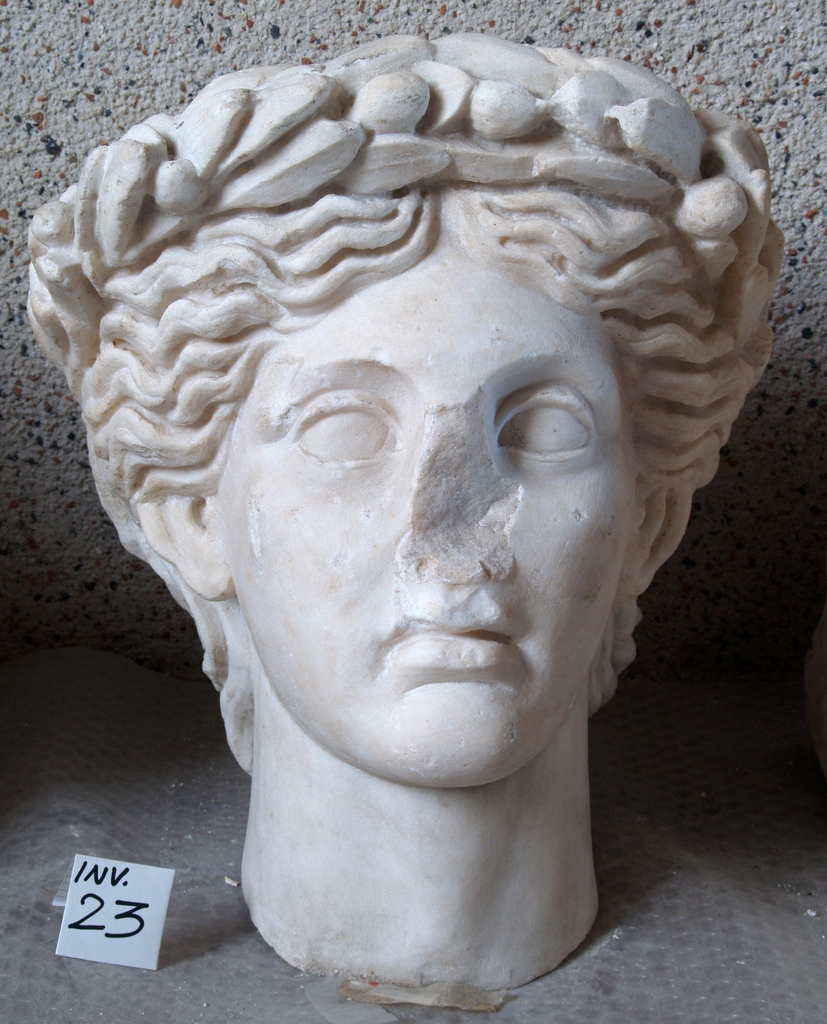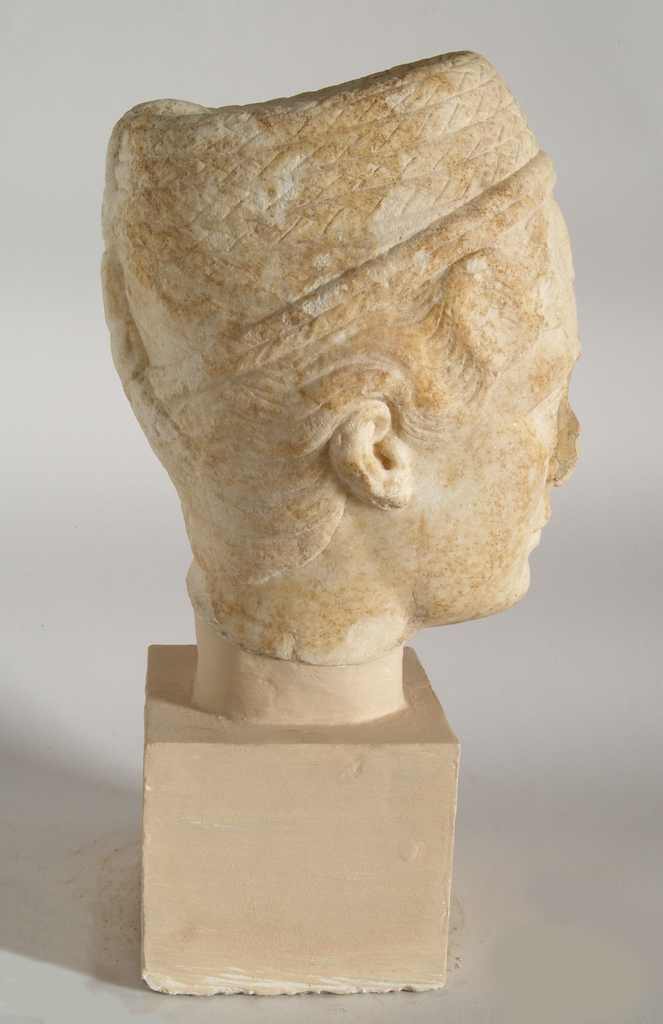

Nel pannello che introduce la mostra “Voci di Pietra – dalle collezioni epigrafiche del Castello Ursino di Catania- curata dal Professor in Ancient History dell’Università di Oxforf Jonathan R.W. Prag – in collaborazione con il Progetto di Alternanza scuola-lavoro con il Liceo Artistico M.M. Lazzaro A.S. 2016/2017 - si legge:
In queste tre sale (10 -11- 12) incontrerete voci della Catania antica, custodite nella pietra. Le antiche iscrizioni forniscono una testimonianza unica, di prima mano, della vita e delle azioni di coloro che ci hanno preceduto. Il Museo Civico di Catania conserva una notevole collezione di circa 500 di questi testi, di cui si presenta qui una selezione. In questa sala (n. 10) troverete una introduzione all’epigrafia antica in Sicilia. Nelle due sale seguenti (11 e 12) si presentano esempi di iscrizioni ufficiali pubbliche della Catania romana e di epitaffi funebri degli abitanti di Catania antica (pagana, cristiana ed ebraica).
In these treee rooms, (10-11-12 ndr) you will meet voices of ancient Catania, preserved on stone. Ancient inscriptions provide unique first-hand sources of evidence for the livesand actions of those who came before us. The Civic Museum of Catania preserves a remarkable collection of some 500 of texts, and a selection is presented here.In this room you will find an introduction to ancient epigraphy in Sicily. In the two rooms that follow we present exsemples of official public inscriptions from Roman Catania and of the funerary epitaphs of the citizens of ancient Catania (Pagan, Christian and Hebrew).
CHE COS'E' L'EPIGRAFIA?
Epigrafia è il nome fornito alla pratica di scrivere su materiale durevole, come pietra o metallo (anziché legno, papiro o pergamena). La decisione di incidere un testo è una scelta culturale e non comune ad ogni società. Gli antichi Greci e soprattutto i Romani incisero testi in grandi quantità (ne sopravvivono fino ad un milione); altri, come i Fenici, ne produssero molti di meno. Le iscrizioni più comuni sono gli epitaffi funerari (70%) ma molti altri tipi di documenti venivano incisi, sia pubblici (per esempio leggi, trattati, iscrizioni onorarie) che privati (per esempio maledizioni).
WHAT IS EPIGRAPHY?
Epigraphy is the name given to the practice of writing texts on durable materials, such as stone or metal ( instead of wood, papyrus or vellum). The decision to engrave a text is a cultural choise, and not common to every society. The ancient Greeks, and above all the Romans, engraved texts in very large numbers ( as many as 1 million survive) ; others, such as the Phoenicians, did so much less. The most common inscriptions are funerary epitaphs (c. 70%), but many other types of document werww also engraved, both public( e.g. laws, treaties, honours) and private (e.g. curses). Inscriptions reflect a deliberate choice to make a text permanent, often for public display - as a result they are not necessarily the same as the original document, and they always reflect a conscious effort to present a text, and must be read accordingly.
Because the material is durable, inscriptions are valuable source of evidence for many aspects of ancient society; languages, people, historical events, public institutions, family structures, personal beliefs, naming practices and much more. For some ancient languages, such as Phoenician or Sikel, inscriptions are our only evidence.
EPIGRAFIA IN SICILIA – EPIGRAFIA NELL’ANTICA CATANIA
Dall’antica Catania provengono più di quattrocento iscrizioni su pietra (c.a. il 10%) del totale della Sicilia. La città greca di Katane fu fondata nel 729 a.C., ma si sono conservate solo poche iscrizioni del periodo che precede la colonia romana e nessuna prima del IV secolo a.C. Ciò è in parte una conseguenza delle continue occupazioni e ricostruzioni sul sito durante tutta l’antichità e delle ripetute distruzioni della città dovute a catastrofi naturali anche legate alla presenza dell’Etna ; ma l’alto numero delle iscrizioni di età romana è anche un riflesso della più intensa cultura epigrafica dell’impero romano. La colonia romana di Catina è stata istituita dall’imperatore Augusto nel 21 a.C. Si è conservato un piccolo numero di testi pubblici e ufficiali del periodo imperiale (sala 2), tuttavia c.a. il 75% di tutti i testi sopravvissuti è costituito da iscrizioni funerarie da tombe distribuite lungo il perimetro della città antica (sala 3).
EPIGRAPHY IN SICILY - EPIGRAPHY IN ANCIENT CATANIA
Over four hundred inscriptions on stone are preserved from ancient Catania approximately 10% of the total from Sicily). The Greek city of Katane was founded c.729 BC, but only a handfull of inscriptions are preservated from before the time of the Roman colonia and none from before the fourth century BC. This is partly a consequence ofthe continued occupation and rebuilding on the troughout antiquity, as well as the more limited preservation of the ancient citydue to the subsequent activities of Mount Etna; buti t is a reflection of thee more intense ephigraphic culture of the Roman empire. The Roman colonia of Catina was estabilished by the Emperator Augustus in 2 BC. A small number of public and official texts are preserved from the imperial period (see room 2), but c. 75% of all the surviving texts are funerary inscriptions, from tombs around the perimeter of the ancient city (see room 3).

I-II sec d.C.

I-II sec. d.C.

I-II sec. d.C.

II sec d.C.

II-III sec d.C.

II sec d.C.

II sec d.C.

337-408 d.C.

I o II sec d.C.
N. inventario:
Soggetto/oggetto:
Autore:
Datazione:
Descrizione:
Materiale e tecnica: